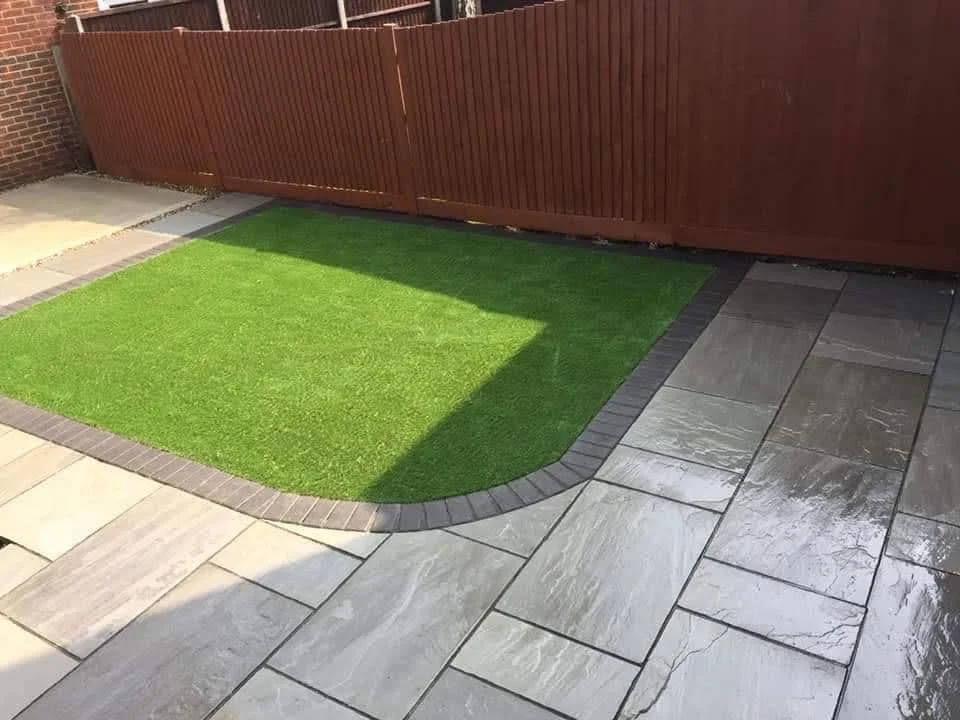Our Services
DRIVEWAYS
A driveway is a private car park or entrance that provides access from a public road to a residence, business, or other building. It is typically designed to accommodate vehicles, and its surface can be made of various materials, such as:
The most popular choice for driveways. A decorative and durable option. Block paving. Comes in various colours styles and different textures. Improving the front of any property or business.
- Tarmac: A popular choice for driveways due to its durability and affordability.
- Resin: a decorative stone finish comes in a wide range of colours and designs. Low maintenance. But a little bit more expensive than other finish options.
- Concrete: A long-lasting and low-maintenance option that can withstand heavy traffic.
- Gravel or crushed stone: A cost-effective and easy-to-install option that requires regular maintenance.
Driveways can vary in size, shape, and design, depending on the property's layout, terrain, and architectural style. Some common features of driveways include:
- Entrance gates or pillars
- Lighting fixtures or lanterns
- Landscaping or gardens
- Parking areas or turnaround spaces
- Drainage systems or gutters
Overall, a well-designed and well-maintained driveway can enhance the appearance and functionality of a property, while also providing safe and convenient access for vehicles and pedestrians.
PATIOS
A patio is an outdoor living space designed for relaxation, entertainment, and recreation. Typically adjacent to a residence or building, a patio provides a seamless transition between indoors and outdoors, allowing individuals to enjoy the fresh air, natural light, and surrounding landscape.
Patios can be customized to suit various styles, sizes, and purposes, featuring:
- Durable flooring materials, such as concrete, stone, brick, or wood
- Comfortable seating areas, including furniture, benches, or built-in seating
- Decorative elements, like planters, gardens, water features, or sculptures
- Sheltering structures, including pergolas, gazebos, umbrellas, or awnings
- Outdoor heating or cooling systems, such as fire pits, heaters, or misters
- Lighting fixtures, including string lights, lanterns, or tabletop torches
- Outdoor kitchens or dining areas, complete with grills, counters, and seating
Patios serve as an extension of indoor living spaces, perfect for:
- Al fresco dining and entertaining
- Relaxing and reading
- Outdoor recreation and games
- Gardening and plant care
- Stargazing and enjoying nature
Whether small and intimate or large and lavish, a well-designed patio can enhance the beauty and functionality of a property, providing a tranquil retreat and a space to create lasting memories.
LANDSCAPING
Landscaping refers to the process of modifying and enhancing the outdoor environment of a property, including gardens, lawns, trees, and other natural features. It involves a combination of horticulture, architecture, and engineering to create a visually appealing and functional outdoor space.
Landscaping can include a wide range of activities, such as:
- Planting and maintaining trees, shrubs, flowers, and other vegetation
- Designing and installing gardens, patios, walkways, and other hardscapes
- Installing irrigation and drainage systems
- Creating water features, such as ponds, fountains, and waterfalls
- Building outdoor structures, such as gazebos, pergolas, and decks
- Implementing outdoor lighting and other electrical systems
The goals of landscaping can vary depending on the property owner's needs and preferences, but common objectives include:
- Enhancing the aesthetic appeal of the property
- Increasing property value
- Creating functional outdoor living spaces
- Providing environmental benefits, such as reducing stormwater runoff and improving air quality
- Supporting local wildlife and biodiversity
Landscaping can be applied to various types of properties, including:
- Residential homes and gardens
- Commercial properties, such as office buildings and shopping centers
- Public spaces, such as parks and plazas
- Institutional properties, such as schools and hospitals
Overall, landscaping is a dynamic and creative field that requires a combination of artistic vision, technical expertise, and environmental awareness.
commercial
Block paving, one of the most popular finishes. Also known as brick paving or concrete paving, is a popular method of creating decorative and durable outdoor surfaces, such as driveways, patios, walkways, and parking areas. This technique involves laying individual blocks or bricks made of concrete, clay, or stone, arranged in a pattern to create a beautiful and functional surface.
Characteristics of block paving:
Aesthetics - Block paving offers a wide range of colours, textures, and patterns, allowing for creative design and visual appeal.
Durability - Individual blocks can withstand heavy traffic and harsh weather conditions, making them a long-lasting solution.
Flexibility - Block paving allows for easy repair and replacement of individual blocks, reducing maintenance costs.
Drainage - The gaps between blocks enable efficient water drainage, reducing the risk of flooding and puddles.
Safety - Block paving provides a slip-resistant surface, ensuring traction and stability for pedestrians and vehicles.
Types of block paving:
Concrete block paving - Made from concrete, these blocks are durable, affordable, and available in various colors and textures.
Clay block paving - Made from natural clay, these blocks offer a more traditional look and feel, with excellent durability and low maintenance.
Stone block paving - Made from natural stone, these blocks provide a premium, high-end appearance, with exceptional durability and resistance to weathering.
Block paving is an ideal solution for:
- Driveways and parking areas
- Patios and outdoor living spaces
- Walkways and pathways
- Commercial and industrial areas
- Public spaces and landscaping projects
Contact us
Interested in working together? Fill out some info and we will be in touch shortly. We can’t wait to hear from you!




